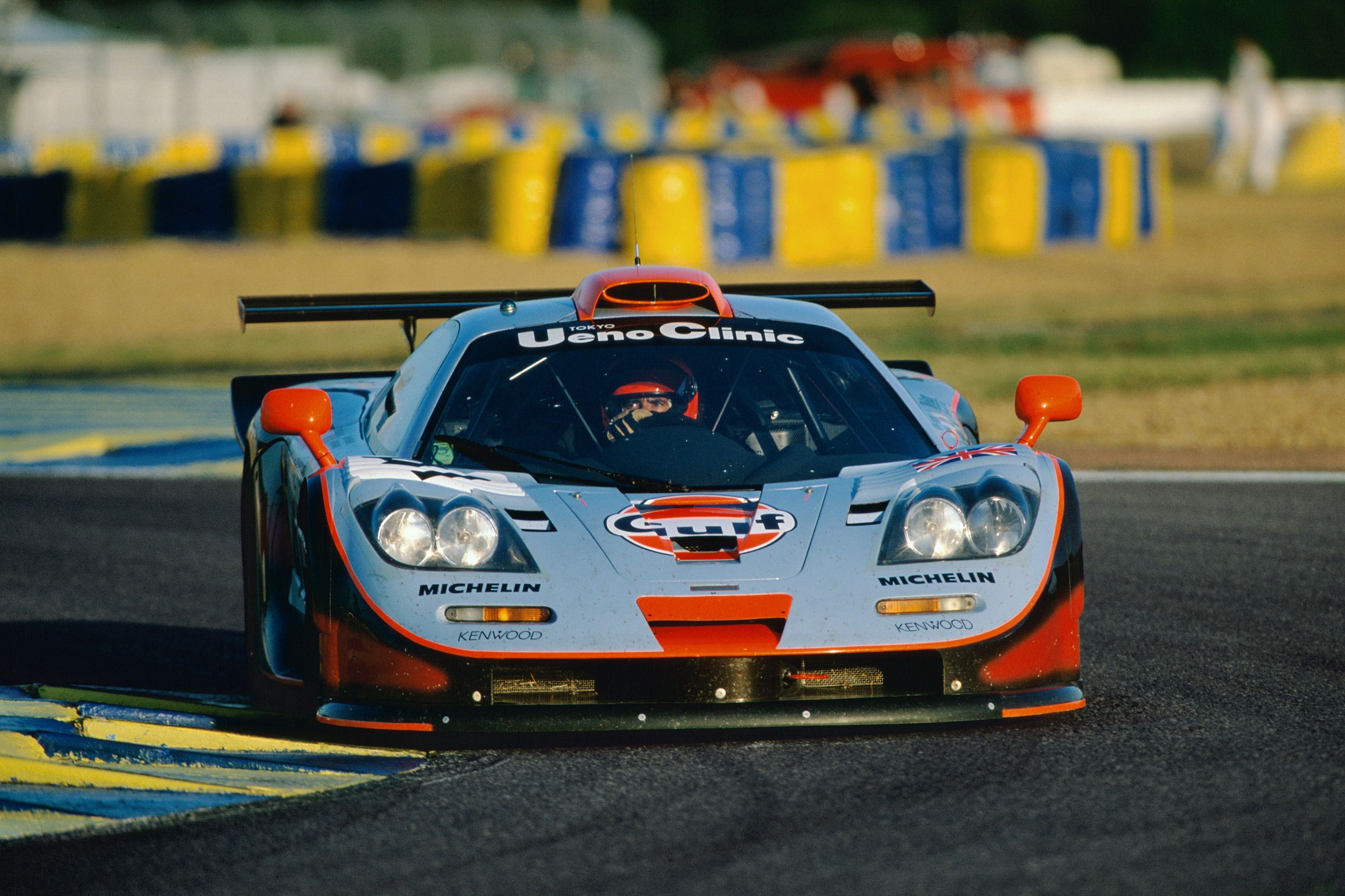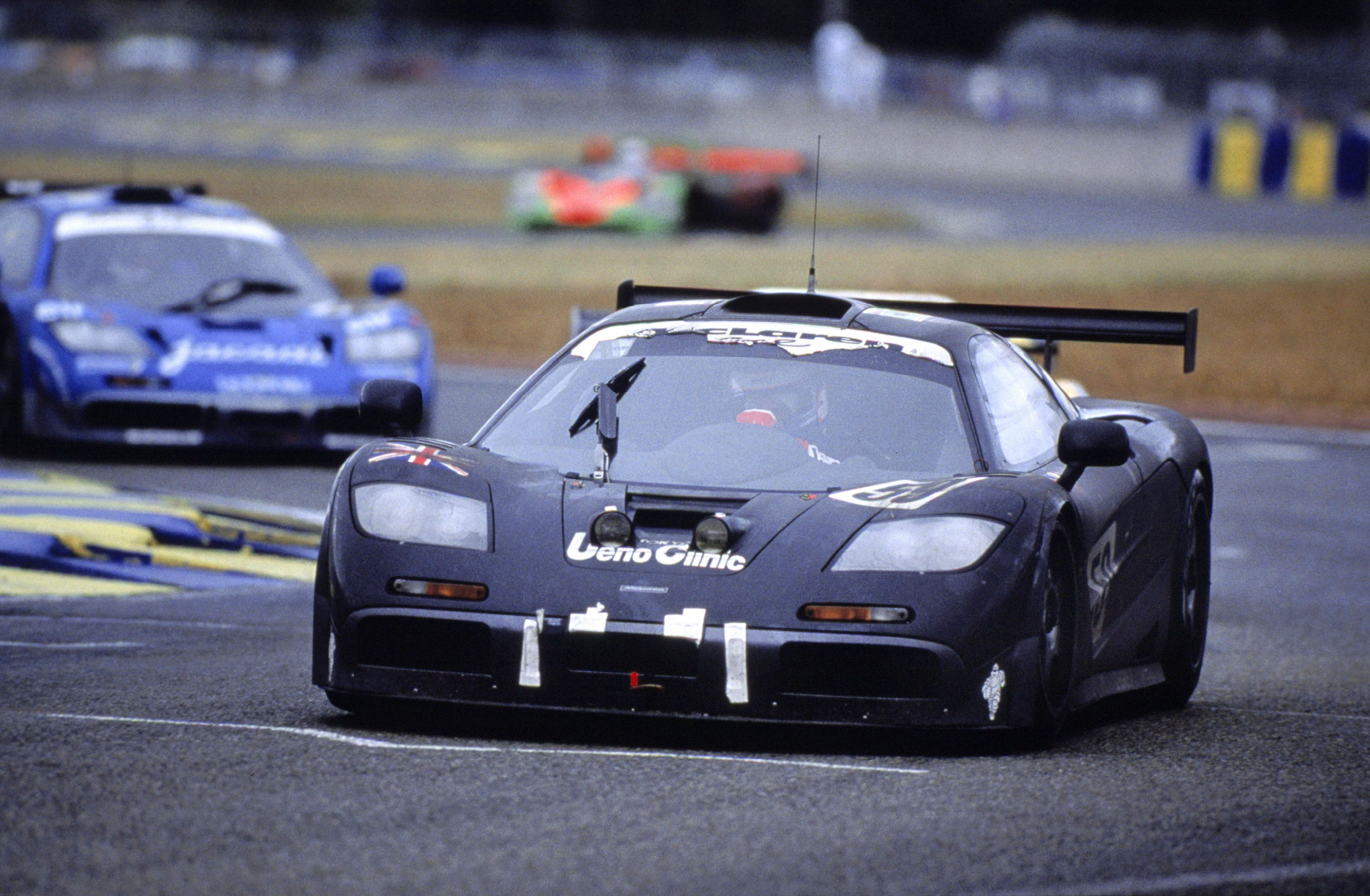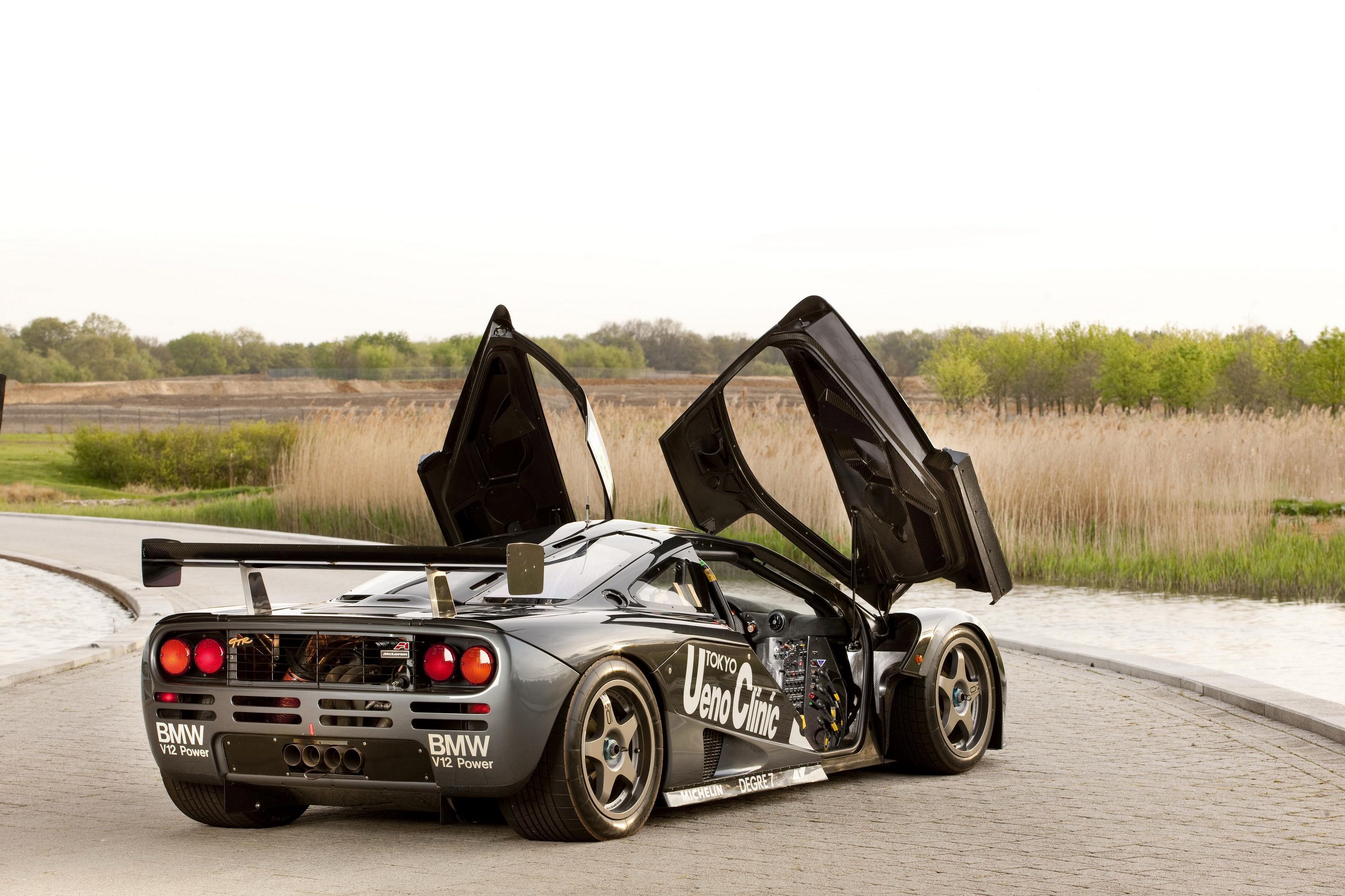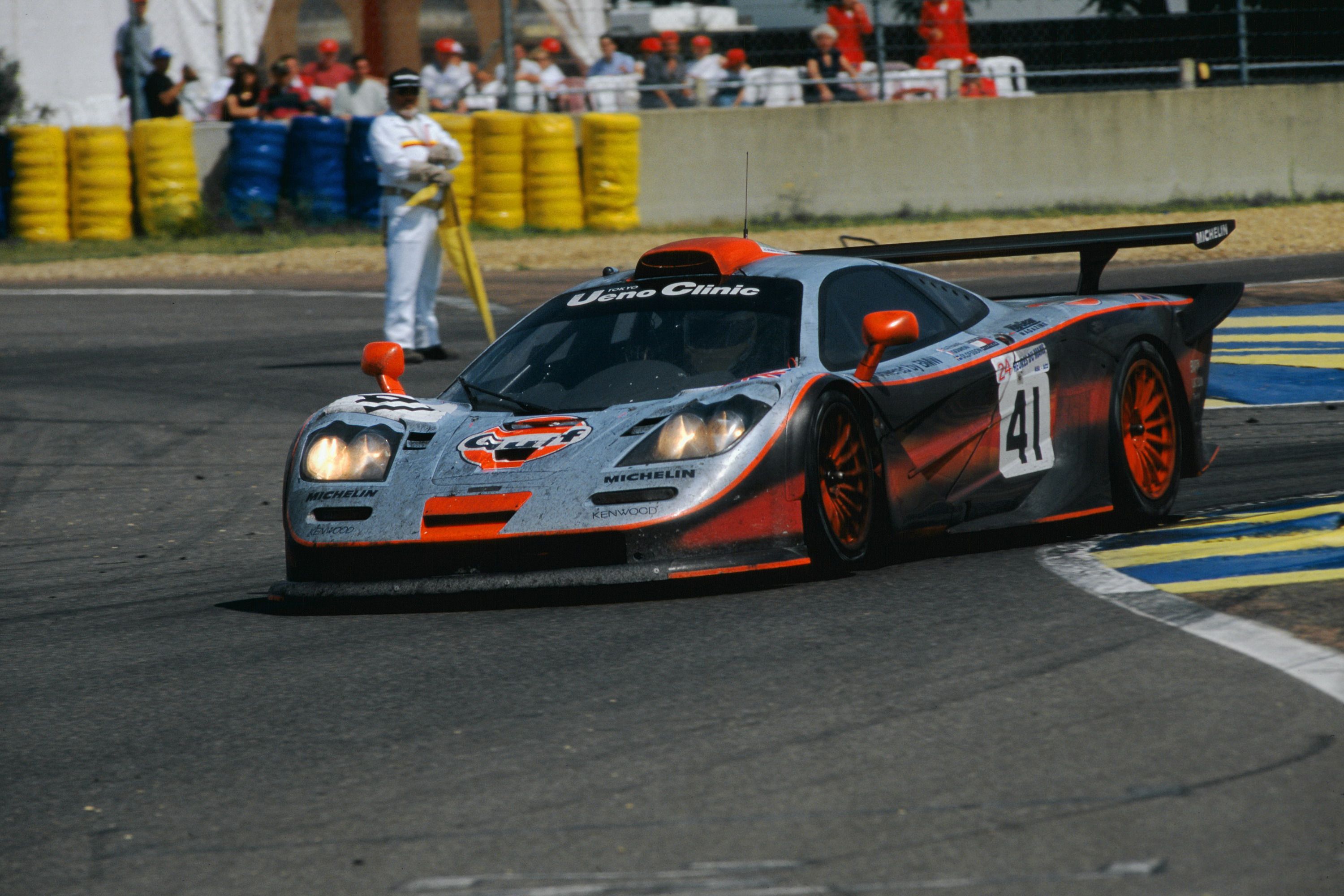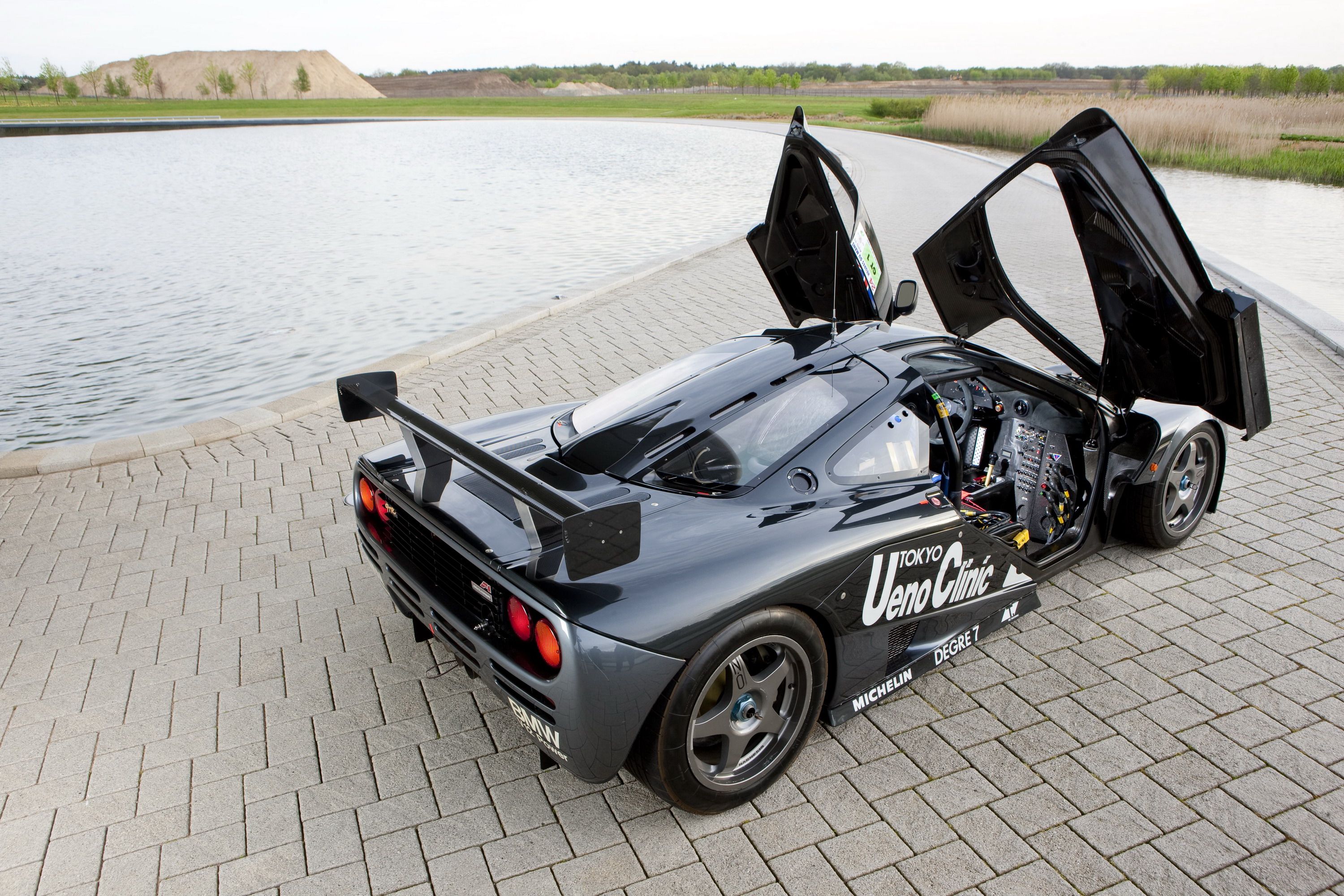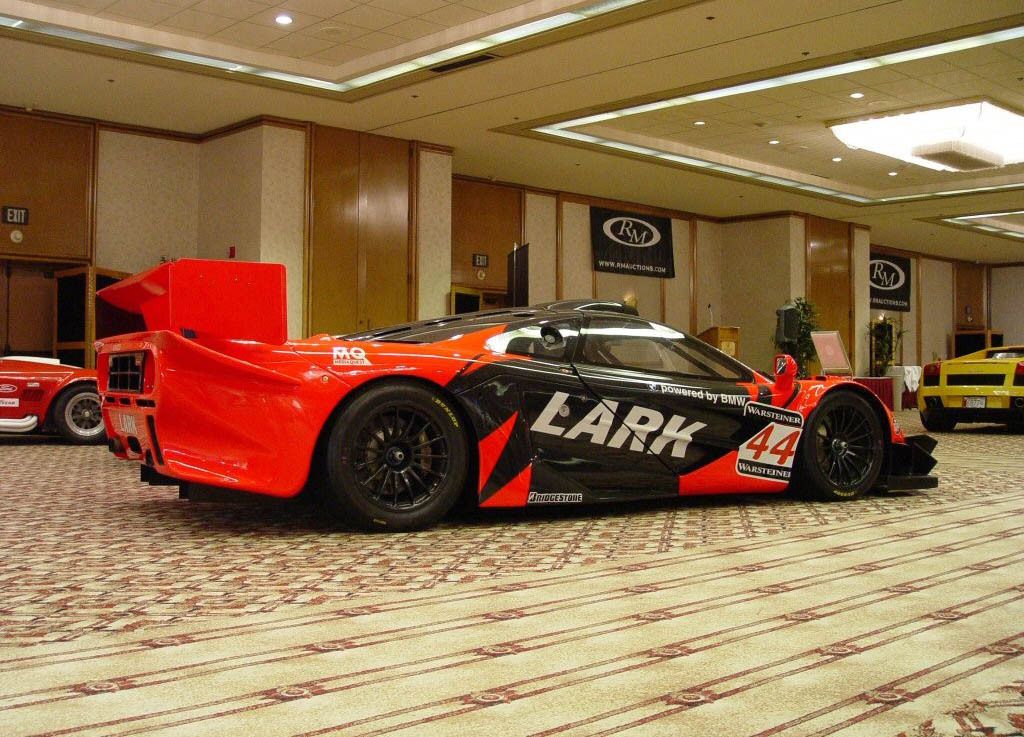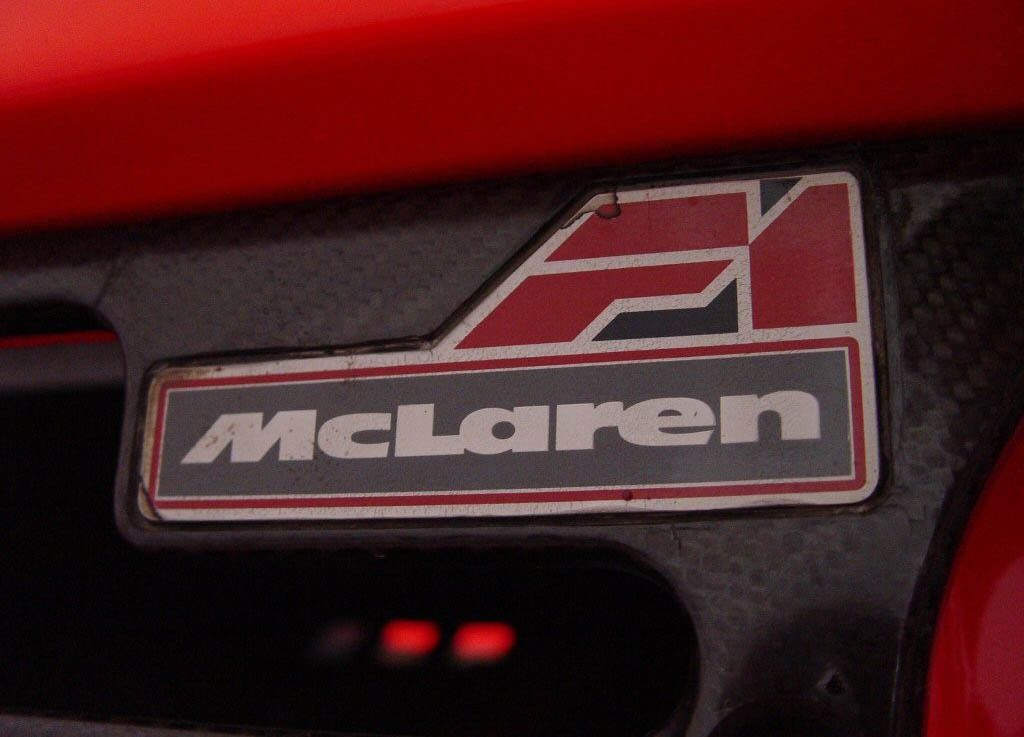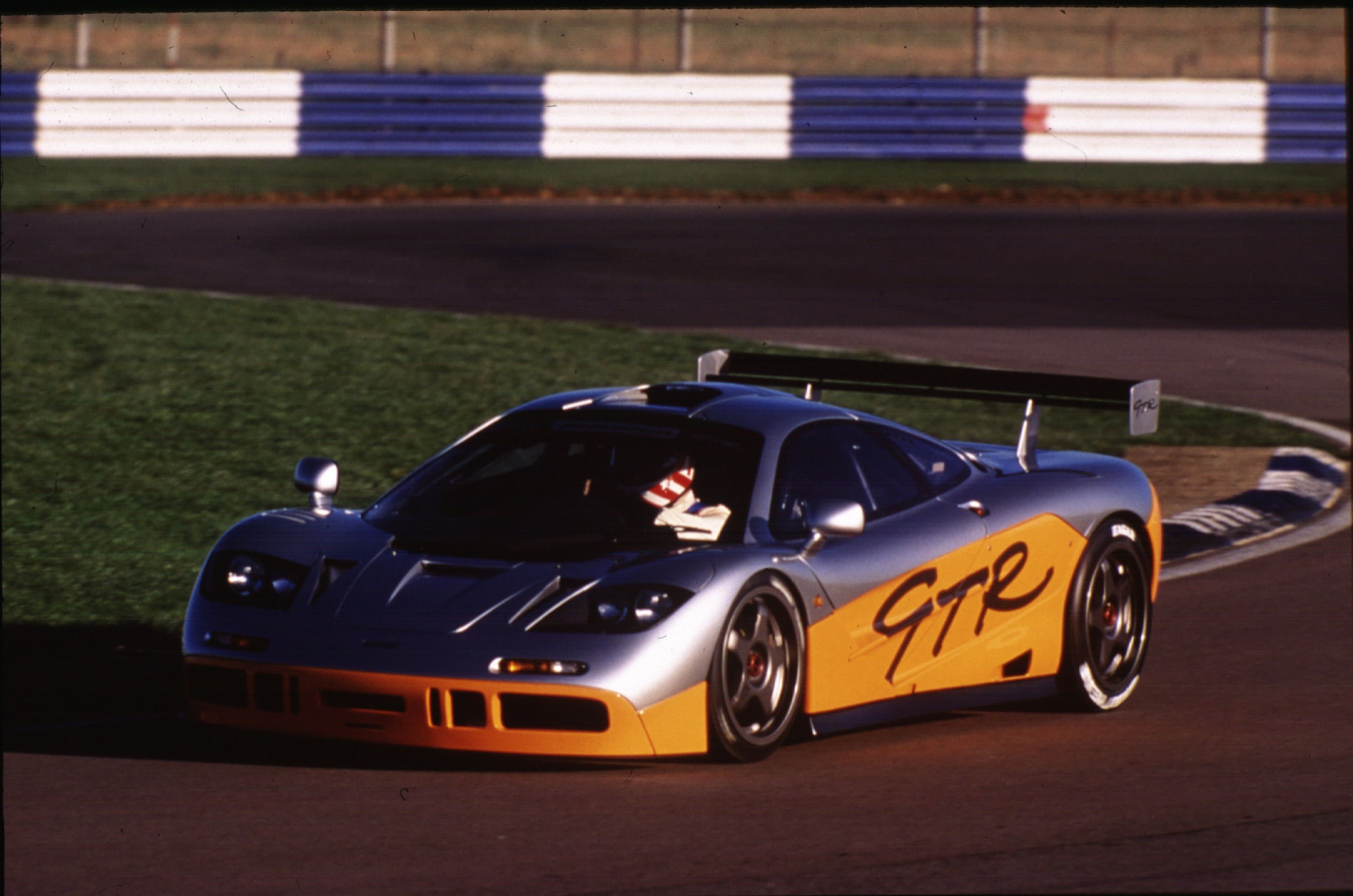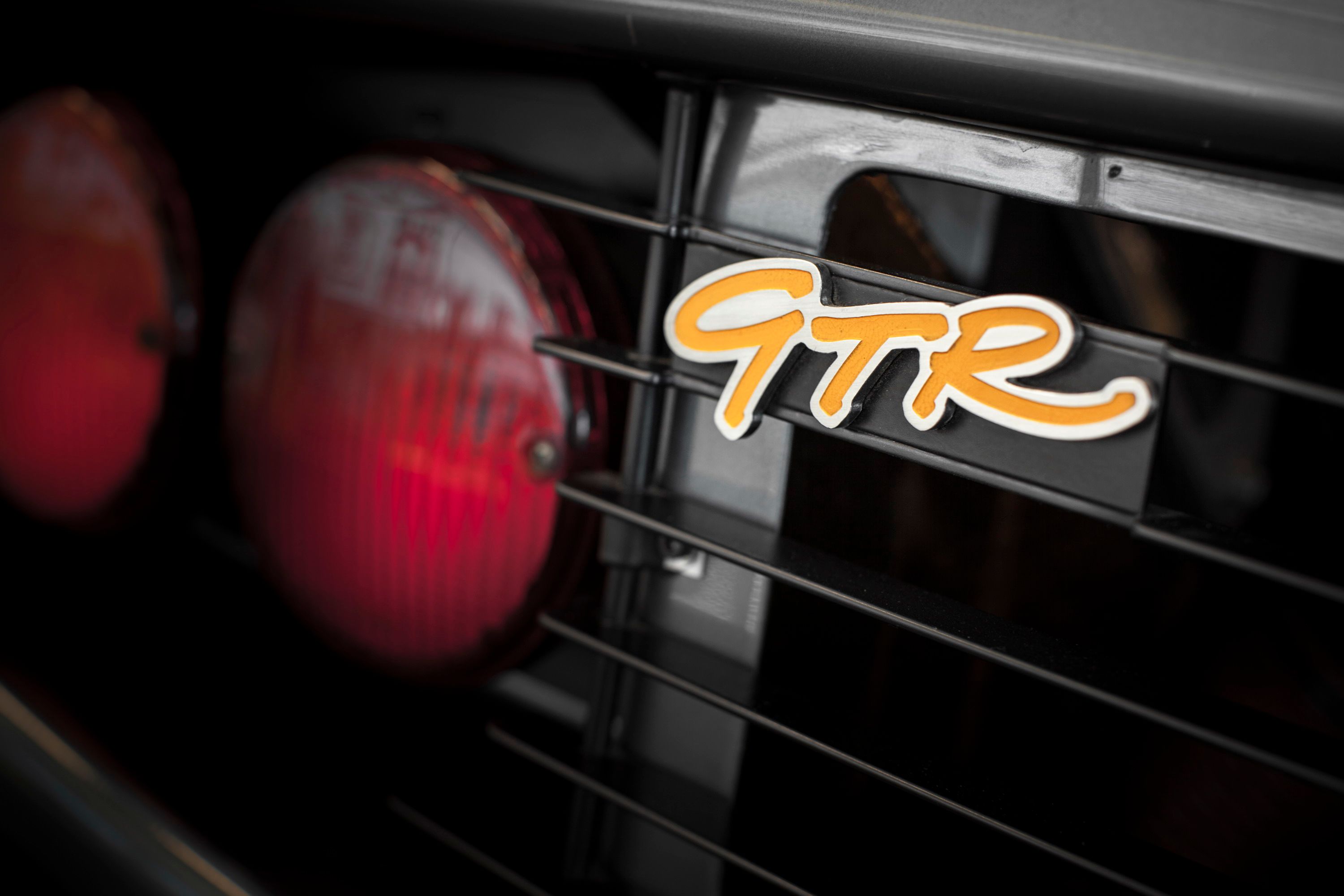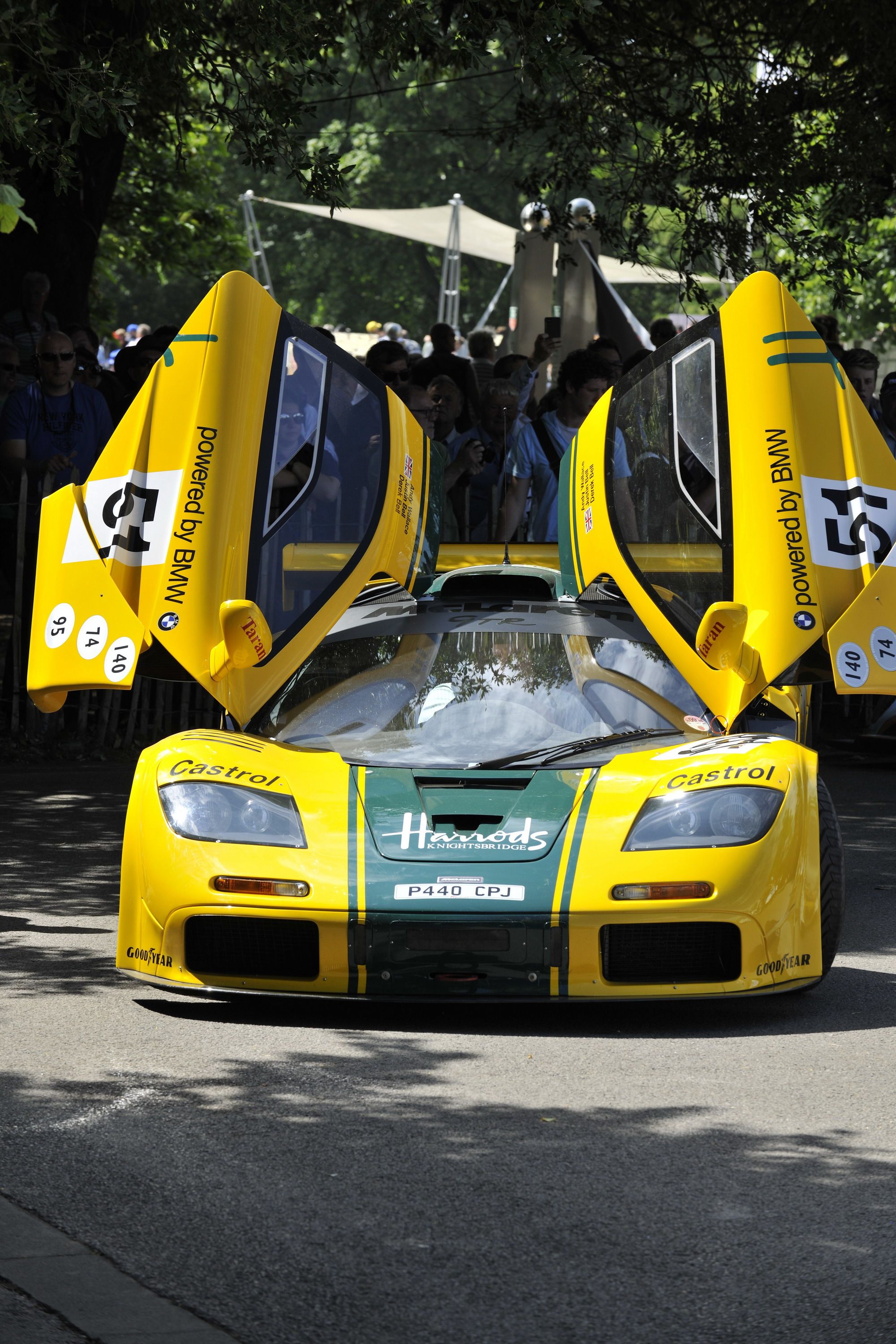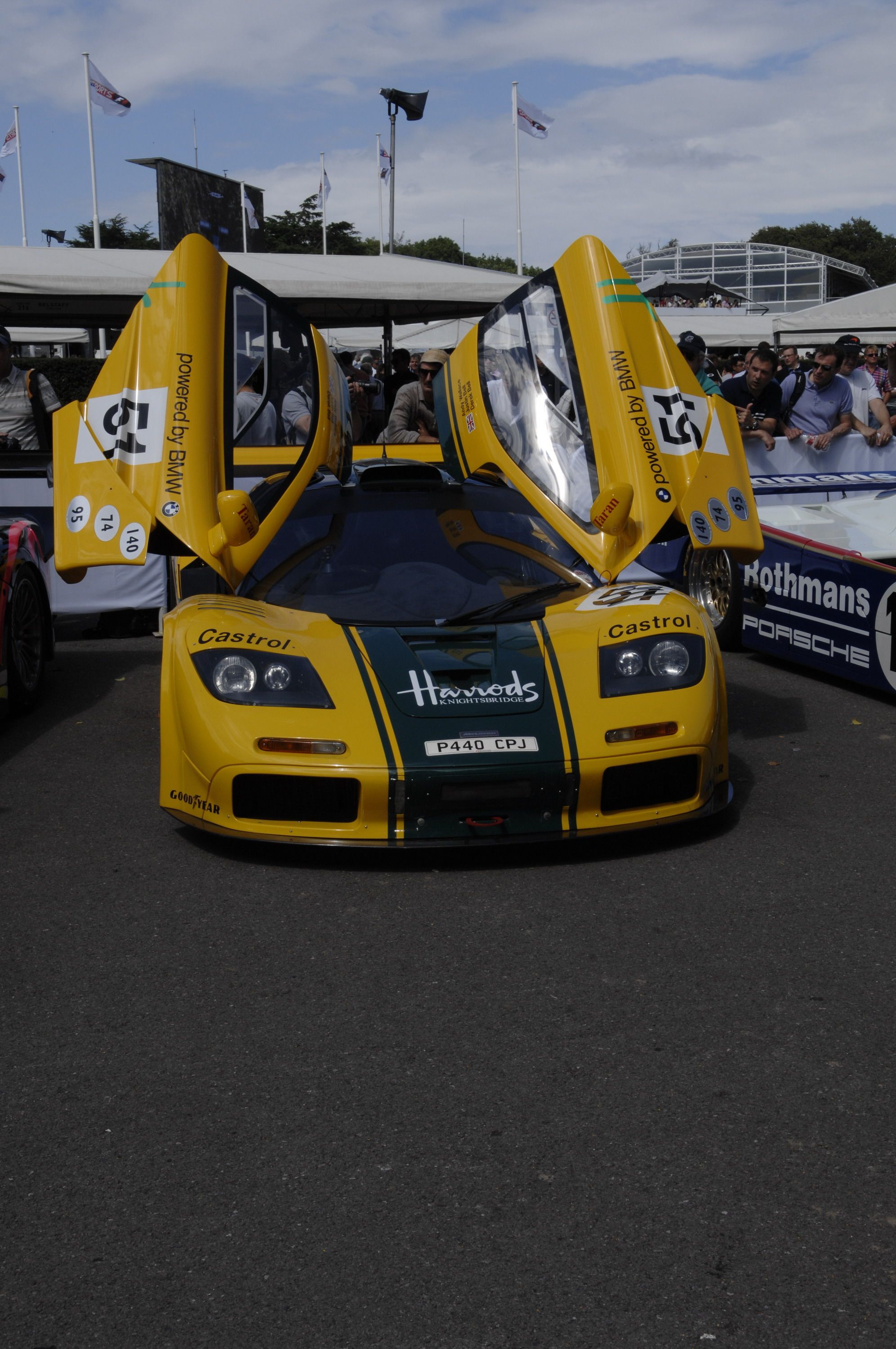In 1992, McLaren->ke284 took the supercar->ke177 market by surprise with a vehicle that was unlike any other produced until then: the F1.->ke1159 Not only lighter and more powerful than anything else in dealerships at the time, the F1 was also the first production car to feature a carbon-fiber monocoque and a center-mounted driver's seat, among many other unique features and innovations. What's more, it became the world's fastest production car at 240.1 mph, smashing the previous record by a whopping 27.8 mph.
What the world didn't know then was that the F1 would also spawn a successful race car.->ke148
Although McLaren had used many racing->ke447 technologies and designs for the F1, Gordon Murray's goal was to build "the ultimate road car." McLaren had no intention to take it racing, but many customers and racing teams started seeing the potential in the F1 as soon as the first cars had hit the roads. Ray Bellm and Thomas Bscher were among those who turned to Gordon Murray and Ron Dennis in an attempt to convince them to build racing versions for the BPR Global GT Series.
McLaren agreed to build F1s for the track if Bellm would bring him at least three customers for such a car. A few months later, the three customers and Dennis met to sign the contract and the F1 GTR project was born, which would give McLaren its first outright win at Le Mans.->ke1591
Updated 07/06/2016: In order to celebrate 650S GT3's win at the Nürburgring round of the Blancpain Sprint Series this weekend, McLaren took a look back into the history and released a very cool video featuring the McLaren F1 GTR at the Nürburgring in the fifth race of the 1996 BPR Global GT Series. And you guessed, the F1 GTR was also a winner. Hit "play" to watch the video!
Continue reading to find out more about the McLaren F1 GTR.
1995 - 1997 McLaren F1 GTR
- Make: Array
- Model: 1995 - 1997 McLaren F1 GTR
- Engine/Motor: V12
- Horsepower: 238@8500
- Torque: 5500
- Transmission: 6 speed manual
- [do not use] Vehicle Model: Array
Exterior
Because the original F1 was very similar to a race car, extensive modification wasn't needed to turn it into a race-spec vehicle for the 1995 season. Body alterations were minor compared to the usual racing conversions, and included the addition of air vents to the nose and sides and a massive, adjustable wing to the rear for improved downforce.
Of course, GTRs also received a racing livery from the teams that raced them in the BPR Global GT and other motorsport series.
For 1996, however, the F1 had its shell extended both front and rear to include a larger splitter and a wider wing. The bodywork was also modified to allow it to be removed quicker in the pits for easier repair. These new modifications made the 1996 GTR the fastest F1 in terms of straight-line speed.
The GTR received further updates for the 1997 season, when McLaren debuted the Long Tail version. Significantly different than its predecessor, the Long Tail featured a much longer nose and rear section, wider fenders and a bigger rear wing. Ground clearance was also changed to 2.76 inches front and rear from the 2.36-inch front and 3.15-inch rear setup of the 1996-spec car.
All told, the Long Tail was more of a complete redesign rather than just an update, as McLaren had to maximize the amount of aerodynamic downforce in order to compete with prototypes such as the Porsche 911 GT1 and Mercedes-Benz CLK-GTR.
Following the GTR's retirement from most racing series in 1998, some examples were modified into street-legal supercars. Visually, the cars remained unchanged save for the increased ride height required to meet road regulations.
Exterior Dimensions
|
Weight |
1,012 KG (2,231 LBS) |
|
Length |
4,367 MM (171.9 Inches) |
|
Width |
1,900 MM (74.8 Inches) |
|
Height |
1,090 MM (42.9 Inches) |
|
Wheelbase |
2,718 MM (107 Inches) |
|
Track (fr/r) |
1,558 MM (61.3 Inches) / 1,488 MM (58.6 Inches) |
Interior
Note: F1 GTR Long Tail interior shown.
Like the exterior, the interior of the 1995-spec GTR saw little structural modification. Before sending it to the track, McLaren stripped the F1 of all creature comforts, including the passenger seats, and added a full racing roll cage and a fire extinguisher, as required by the FIA. Because the driver's seat was mounted in the center, various buttons and switches were added on the right side of the dashboard. The driver seat was replaced by a racing unit with a six-point harness. Although the 1996- and 1997-spec cars received different steering wheels, gear shifters and "center stacks," the overall configuration of the cabin remained unaltered.
When converted into road-legal supercars, some GTRs were retrofitted with the F1's sound deadening system and the two passenger seats. However, most enthusiasts opted to keep the stripped-out, motorsport interior in order to maintain the curb weight as close as possible to the race car's.
Drivetrain
The F1 GTR was powered by the same 6.1-liter V-12 engine developed by BMW, but because the FIA required all entrants to use an air restrictor, power was limited to around 600 horsepower, which was 27 horses less than the road car.
The GTR retained the F1's stock six-speed manual gearbox too. For 1996, the transmission was modified to include a lighter magnesium housing and more robust internals, contributing to an 84-pound lighter GTR.
More extensive modifications were made for the 1997 GTR Long Tail. A stroke reduction brought the BMW-sourced V-12 down to 6.0 liters in an attempt to prolong its life and improve reliability.
The gearbox was also replaced with a new X-trac six-speed sequential transmission which provided quicker shifts.
Although FIA-spec cars were still limited to the 600-horsepower output imposed by the air restrictor, cars entered in other series had their powerplants tweaked to generate as much as 900 horses.
These figures were downright amazing for the GTR Long Tail, which tipped the scales at only 2,018 pounds, which made it significantly lighter than its predecessors.
Drivetrain Specifications
|
Displacement |
6,064 cc |
|
Bore / Stroke |
86.0 mm (3.4 in) / 87.0 mm (3.4 in) |
|
Compression |
11.0:1 |
|
Valvetrain |
4 valves / cylinder, DOHC |
|
Fuel feed |
Fuel Injection |
|
Aspiration |
Naturally Aspirated |
|
Power |
600 HP @ 7,500 RPM |
|
Torque |
480 LB-FT @ 5,600 RPM |
|
BHP/Liter |
99 bhp / liter |
|
Gearbox |
6 speed Manual |
|
0 to 60 mph |
3 seconds |
|
Top Speed |
240 MPH |
Chassis, Suspension and Brakes
The GTR continued to use the F1's carbon-fiber monocoque chassis, which made the British supercar the first production vehicle to employ such a feature. Early GTRs also used a mildly revised suspension system and carbon brakes. McLaren also equipped it with a racing fuel tank. Although the suspension and the brakes were constantly updated until 1997, McLaren made no modifications whatsoever to the GTR's carbon monocoque.
Le Mans Success and Other Achievements
The F1 GTR made its official track debut in early 1995 in the BPR Global GT Series, which replaced the World Sportscar Championship. The car won its first six races in the series, including taking the first five positions as the Nurburgring.->ke999 After losing two races to Porsche and Ferrari, the GTR regained its form to win the final four events and the championship. Also in 1995, the F1 GTR won the 24 Hours of Le Mans, a race that wasn't part of any series at the time. Although it raced against many GT1 prototypes and Le Mans specials, the F1 GTR not only won the event, but also took third, fourth, and fifth positions.
Next year, the mildly updated GTR went on to win the BPR Global Endurance GT Championship for the second time in a row, despite losing a few races to the newly developed Porsche 911 GT1. At Le Mans, the GTR failed to repeat the previous year's success, having to settle for a fourth position behind TWR's Porsche WSC-95 and a pair of factory-backed 911 GT1s.
As the BPR series became the FIA GT Championship in 1997, McLaren upgraded the GTR to Long Tail specifications. But despite its redesigned shell, which proved successful against the 911 GT1, the British race car was unable to compete with the new Mercedes-Benz CLK-GTR, which took the championship with a comfortable lead. The GTR teams finished second and third in the standings in the F1's final official season in GT racing. The McLarens experience a better Le Mans race that year, but the TWR Porsche WSC-95 was again unbeatable. The F1 GTR crossed the finish line in second and third, ahead of the 911 GT1 and several LMP cars.
The F1 GTR saw success in the Japan Grand Touring Car Championship as well, winning the GT500 class in 1996 ahead of factory teams from Toyota and Nissan. The GTR proved competitive in the British GT Championship too, winning the GT1 class drivers' championship in 1996 and scoring a second place in 1998. Other achievements include a 21-lap victory at the 1997 6 Hours of Vallelunga, and an 11-lap win at the 1998 1000km of Monza.
In all, the McLaren F1 GTR was entered in 141 events, obtained 39 overall wins and 64 podiums.
Prices
Although McLaren never divulged pricing information for the F1 GTR, it is known that race-spec cars were significantly more expensive than the road-going models, which sold for around $1 million in the mid-1990s. Nowadays, GTR's are prized collectibles that sell for millions of dollars at public auctions. The most expensive GTR to ever cross the auction block is a 1997 Long Tail model raced by BMW and driven by JJ Lehto. The car changed hands for $5.28 million during a Gooding & Company sale. It is estimated that the 1995 F1 GTR that won the 24 Hours of Le Mans could attract bids of more than $10 million. This chassis has been with McLaren Automotive ever since its retirement at the end of 1995 and it's not likely the Brits want to part with it anytime soon.
Competition
Porsche 911 GT1
With the revival of international sportscar racing in the mid-1990s through the BPR Global GT Series, Porsche->ke1 set out to return to top level sports car racing with a GT1 class car. But unlike other manufacturers in this category, who used modified version of road cars, Porsche exploited the rule book further and did it the other way around. Specifically, the Germans developed a prototype for the track first and a homologation, street-legal version after that.
Dubbed 911 GT1, it had very little in common with the 911, sharing significantly more components, including the engine, with the Porsche 962. The 3.2-liter flat-six delivered almost 600 horsepower, which traveled to the wheels through a six-speed sequential gearbox. The GT1 went on to win the GT1 class (second overall) at the 1996 24 Hours of Le Mans and took the overall win in 1998, giving Porsche its 16th Le Mans victory. The 911 GT1 remained Porsche's final effort in top-level sports-car racing until 2014, when Stuttgart returned with the 919 Hybrid.
Read our full review here.
Mercedes-Benz CLK-GTR
Much like the 911 GT1, the CLK-GTR was designed primarily as a race car. Built for the new FIA GT Championship in 1997, the CLK-GTR used a 6.0-liter V-12 powerplant tuned to generate up to 630 horsepower and a six-speed sequential gearbox. Winning six races in its maiden season, the CLK-GTR secured both the team and driver championships in 1997.
Having already conquered the FIA GT series, Mercedes->ke187 set its sights on returning at the 24 Hours of Le Mans, a race it had not been at since 1991. The Germans modified the bodywork for improved aerodynamics and replaced the V-12 with a more reliable V-8 powerplant. Unfortunately for Mercedes, the V-8s failed toward the end of the race and both CLK LMs were forced to retire. Mercedes then returned to FIA GT to replace the CLK-GTR with the CLK LM, winning every remaining race, including six 1-2 finishes, and the championship.
In 1999, because no competitor attempted to enter the GT1 class except for Mercedes-Benz, the FIA cancelled the class. In its two years on the track, the CLK-GTR/LM won 17 races out of 22.
You can check out the road-going CLK-GTR here.
Conclusion
Although it's not the most successful race car as far as numbers go, the McLaren F1 GTR holds a very special place in motorsport, mostly for winning both the BRP Global GT Series and the 24 Hours of Le Mans as a mildly enhanced road car. Its ability to defeat purpose-built prototypes and other vehicles developed for quicker racing classes is what made it more popular than other race cars of its era. The 911 GT1 may have been quicker and the CLK-GTR/LM a lot more successful, but it's the F1 GTR that draws more attention two decades later.


